Tell us about your approach to photography. How it all started? What are your memories of your first shots?
Aleksey Kondratyev (AK): I took a photography class in high school and really enjoyed it. I remember my first photos were from a pinhole camera we had to make in that class.
Andrew Colville (AC): I tried to take as many art-related classes as I could when I started high school. Through a clerical error I was placed in a photography class without taking the prerequisite course (I think it was something like “Introduction to Art”). I remember asking my mom to drive me around so I could shoot for the first or second assignment—a kind of scavenger hunt. She dropped me off in the downtown area of a nearby town and waited while I walked around. I think I was mainly interested in composition, though I hadn’t really learned about aesthetics formally. I would just take photos of things at angles that felt intuitively appealing.
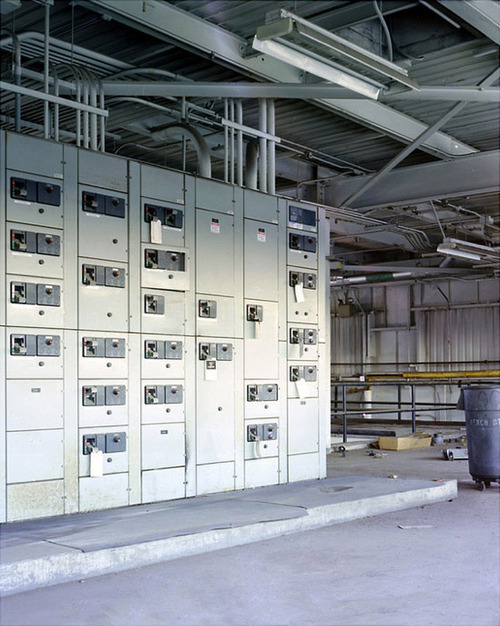
© Andrew Colville
How did your research evolve with respect to those early days?
AK: I think when I first became interested in photography, I would just take individual photos that I thought were visually interesting without any research really. I think that I still work in a similar way that’s more intuitive, but I generally do some research about a place before I begin taking photos.
AC: I didn’t really have a methodology; I simply shot things I thought were nice-looking while loosely following the guidelines of a given assignment.
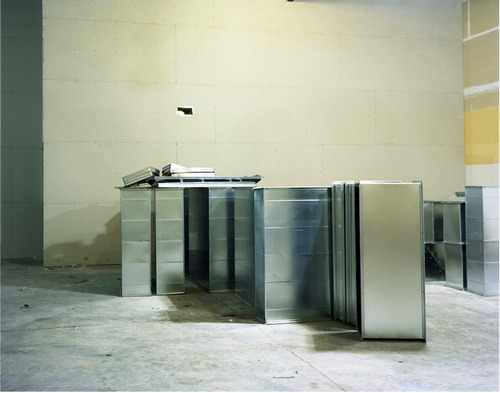
© Andrew Colville
You are now students at Wayne State University in Detroit, and Hunter College in New York. Tell us about your educational path. What are your best memories of your studies. What was your relationship with photography when you started?
AK: After a year of taking high school photo classes, I began taking classes at a community college so I could have access to a color darkroom (our school only had a black and white darkroom). I took classes there throughout most of the time I spent in high school and I remember it being a nice experience. After I graduated high school, I went to the community college for a year and then transferred to a University.
I think my best memories from my studies are the first few classes that I took learning to make and process c-prints. When I first started, my relationship with photography might have been more romanticized than it is now. At that time, photography to me was something that I knew little about, but was interested in. I think now that I’m well-versed in it, it’s lost some of that mystery, though I still feel excited about it.
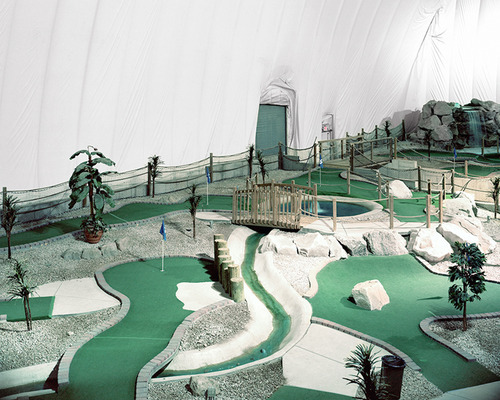
© Aleksey Kondratyev from the series ‘Fabricated Adventures’
AC: I remember arguing with my teacher about subjectivity during a lecture. She showed us an image that possessed what she considered a poor composition, if memory serves, and stated that if a child took the photo, it could not be considered art, but if an “artist” took the photo, it had merit. I found fault with that conception and tried to articulate something about decontextualization. She got upset and I think she mouthed “asshole” to another student, as if to validate her view, after the discussion was over. It seemed distressing at the time but I think in retrospect it was kind of epiphanic.
What were the courses that you are passionate about and which have remained meaningful for you?
AK: I took a course called ’Intro to Color Photography,’ and it was a color darkroom class. I can remember being fascinated by the whole process of color printing and I think that’s also the point in my life when I became more serious about photography.
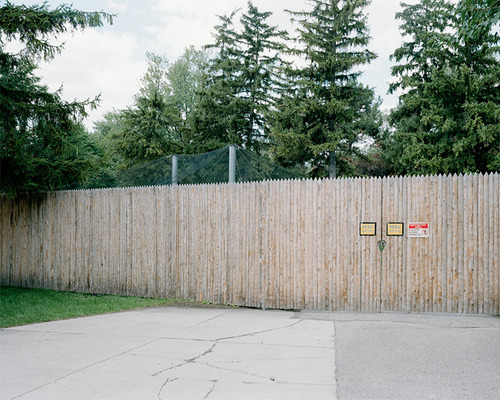
© Aleksey Kondratyev from the series ‘Fabricated Adventures’
Any professor or teacher that has allowed you to better understand your work?
AK: I think that what’s helped me understand and think about my work the most is sending showing it to other photographers who I’m interested in, whether it be by e-mail or in person. I think that in any photo department, you tend to get comments that come from a certain perspective and I think it’s nice to know how people outside of that context see your work.
You both are editors of Stand Quarterly, can you tell us about this experience?
AK: Stand has been a good experience for me and I think for Andrew too. Andrew and I started it a few years ago, and through it I’ve gotten a chance to meet a lot of interesting people and photographers that I look up to. Doing Stand has led to a lot of opportunities to do other things. With the past few issues I think the layout has gotten nicer and things just go smoother in general since we both know what to expect. I can remember the first issue when we were trying to figure out indesign as we were putting it together.
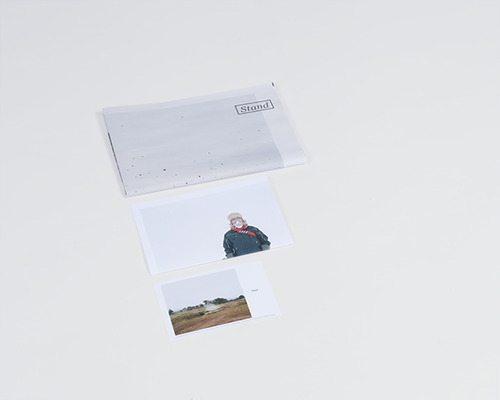
AC: When we first started Stand, Aleksey and I would go to each other’s house every few days to work on its layout. Once we’d assembled a small roster of photographers—which didn’t seem overly difficult—we had to figure out the actual design of the magazine. Neither of us had taken any graphic design courses, but we would sit with either one or both of our laptops in front of us and try to figure pleasing mathematic dimensions and pretty typefaces on InDesign. It’s different now that we live far from each other. It’s become somewhat arduous to send layouts and texts back and forth consistently. For that reason, I occasionally feel wistful about what Stand was in its nascence. That said, the physical product looks much more attractive now and we have a bit more clout in the photography world, which both facilitate the project.
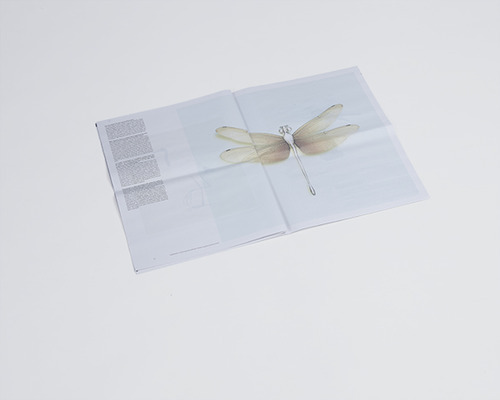
Aleksey, you moved from Kyrgyzstan to Detroit. tell us about your experience and how you got there. Do you feel you have a different perspective on how you see?
AK: I actually didn’t move directly to Detroit from Kyrgyzstan, I moved to West Bloomfield, a suburban township close to Detroit, which is where I grew up (and also where I met Andrew). When I was young my family won a “greencard lottery,” and we moved to Michigan. I don’t know how much actually being born there has had an effect on how I see or work since I was young when I moved. I think what has maybe had a larger impact on me was growing up with Russian parents, in a home that’s culturally different than most American households. Though, I think that anyone’s upbringing is distinct and will inevitably shape their perspective on things in a way that’s unique to them regardless of the culture they’re from.
Andrew, you use both poetry and visual arts medium – can you please talk about this two medium?
AC: It’s pretty difficult to reconcile the two media for me. Photography started as an exclusively visual stimulus for me, long before I gleaned sociopolitical meaning or the like from bodies of work. Contrarily, poetry stemmed from an interest in the impulse of a more abstract expression. I don’t know if I’ve ever been completely satisfied with a poem, but I find a lot of beauty in the structure of language and in how it endeavors to communicate consciousness, I guess.
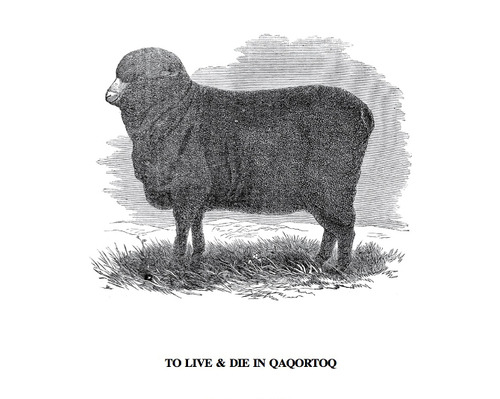
© To Live & Die in Qaqortoq is a forthcoming chapbook by Andrew Colville featuring both new and previously published poetry and visual art. It will be released on newsprint in an edition of 100.
About your work now. How would you described your personal research in general?
AK: I spend a lot of time looking at other work on the internet and looking at photo books. I think it’s really important for photographers or artists to just look at things.
AC: I walk places, look at the internet, buy beer, talk to my girlfriend and to friends, read.
Do you have any preferences in terms of cameras and format?
AK: I like to use large-format because that’s what I feel comfortable with right now; I like that way of working. Though I might try some new things soon.
AC: I like looking at 6x7 ratios. They seem to encompass a lot and feel “fat” in a way I find endearing.
Is there any contemporary artist or photographer, even if young and emerging, that influenced you in some way?
AK: It’s always so difficult to answer this question just because there are so many photographers right now producing work that I think is exciting. I think maybe when I first started, I was interested in work that I wanted mine to look like (Düssledorf School, New Topographics, etc.), but recently I think I’ve liked looking at work that’s different than mine like maybe David Favrod or Ed Panar.
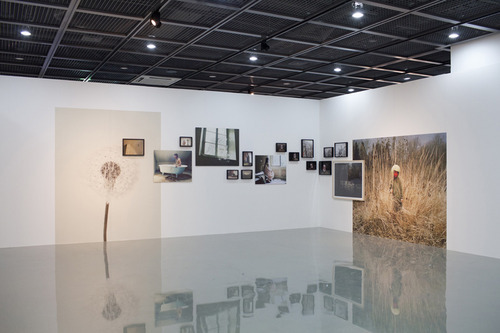
© David Favrod, view of the exhibition “Gaijin” , Daegu Photo Biennale 2012, South Korea
AC: Many of my friends influence me. Zachary German and David Fishkind make me feel like continuing to write, and the work that Andrew Jensen, whom I met in my first year of college, produces acts as an impetus for me to go forward in photography.
Three books of photography that you recommend?
AK: ’Summer Nights’ by Robert Adams, ‘History Images’ by Sze Tsung Leong and‘Ametsuchi’ by Rinko Kawuchi (I haven’t seen this book in person, but I like the photographs and the layout looks different from the typical one centered photo per page layout).
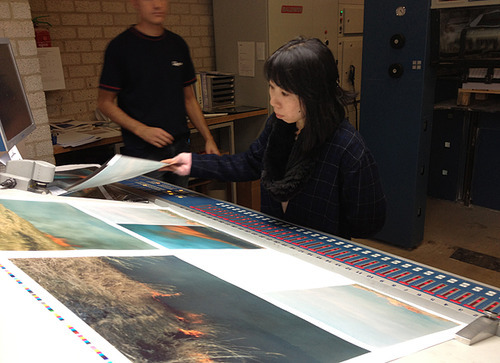
© On-press images from the production of Rinko Kawauchi’s latest monograph, Ametsuchi published by Aperture (2013)
AC: Taryn Simon’s A Living Man Declared Dead and Other Chapters I–XVIII. Luigi Ghirri’s Project Prints. Jason Fulford’s Sunbird, from what I’ve seen of it (I’m still trying to buy a copy but the excerpts I’ve viewed are beautiful)
Is there any show you’ve seen recently that you find inspiring?
AK: There are very few photography shows in Detroit, so it’s difficult to see the type of work that I’m interested in around here. However, last year Alec Soth had a retrospective exhibition at the Cranbrook Museum of Art in Bloomfield Hills, Michigan, and it was a really beautiful show.
AC: Jason Fulford’s 'Hotel Oracl'e release was really fun. We were led through the Hotel New Yorker, where Jason was situated within Nikola Tesla’s former room.
Projects that you are working on now and plans for the future?
AK: I’m working on a project I started this past summer in Kyrgyzstan, which will keep me busy for a while. I’m also about to start on a collaboration with graphic designer Paul Goodrich about gas stations in Detroit.
AC: I’m writing and not publishing. When I really feel confident that I like what I’ve made I’ll try to publish again, but right now I’m just accruing material.
---
LINKS
Aleksey Kondratyev
Andrew Colville
United States
share this page
